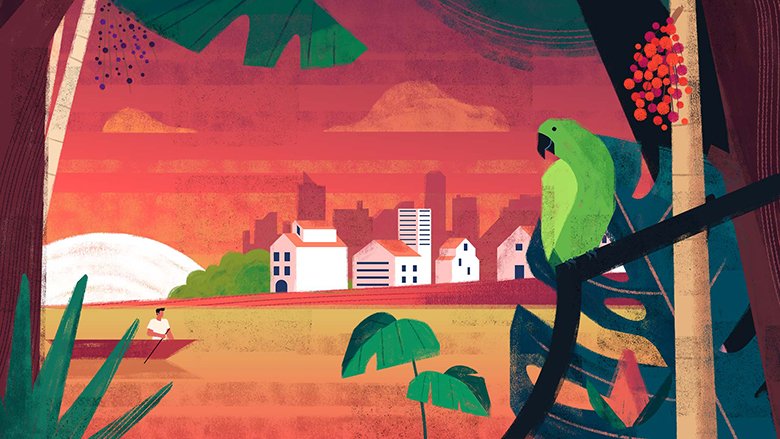Brazil’s Legal Amazon, here called Amazônia, comprises nine states, most of which rank among the poorest in Brazil. It is a vast territory of 502 million hectares, larger in area than the European Union (EU), and home to 28 million Brazilians. Although Amazônia is mostly known for its vast natural forests, over three-quarters of Amazonians live in towns and cities. Thirty-six percent of Amazônia’s population lives in poverty.
Amazônia is home to about 60 percent of the Amazon rainforest and also to parts of other important biomes like the Cerrado savanna and Pantanal wetlands. These natural landscapes comprise large contiguous, mainly forested, areas, many of which have remained relatively untouched by the past 12,000 years of human expansion into natural lands.
Amazônia is one of the world’s last frontier regions. But economic expansion has moved into those ancient forests, destroying them at a rapid rate—especially in Amazônia’s southeast, within what is known as the “Arc of Deforestation”— and threatening the ways of life of many traditional communities. There is an urgent need for an alternative development path for Amazônia that promotes inclusion and sustainable natural-resource use.
This memorandum presents a multipronged approach, a balancing act that seeks to simultaneously provide a pathway to higher incomes for Amazonians while also protecting natural forests and traditional ways of life by focusing on four strategic actions:
- Increasing the welfare of Amazonian citizens by fostering productivity through structural transformation in both rural and urban areas
- Protecting the forest by strengthening land and forest governance, including the enforcement of existing laws (command and control)
- Fostering sustainable rural livelihoods by unlocking the natural capital associated with the standing forest and protecting the poor and traditional ways of life
- Marshaling conservation finance linked to measurable reduction in deforestation and drawing on public and private resources or market-based solutions.
